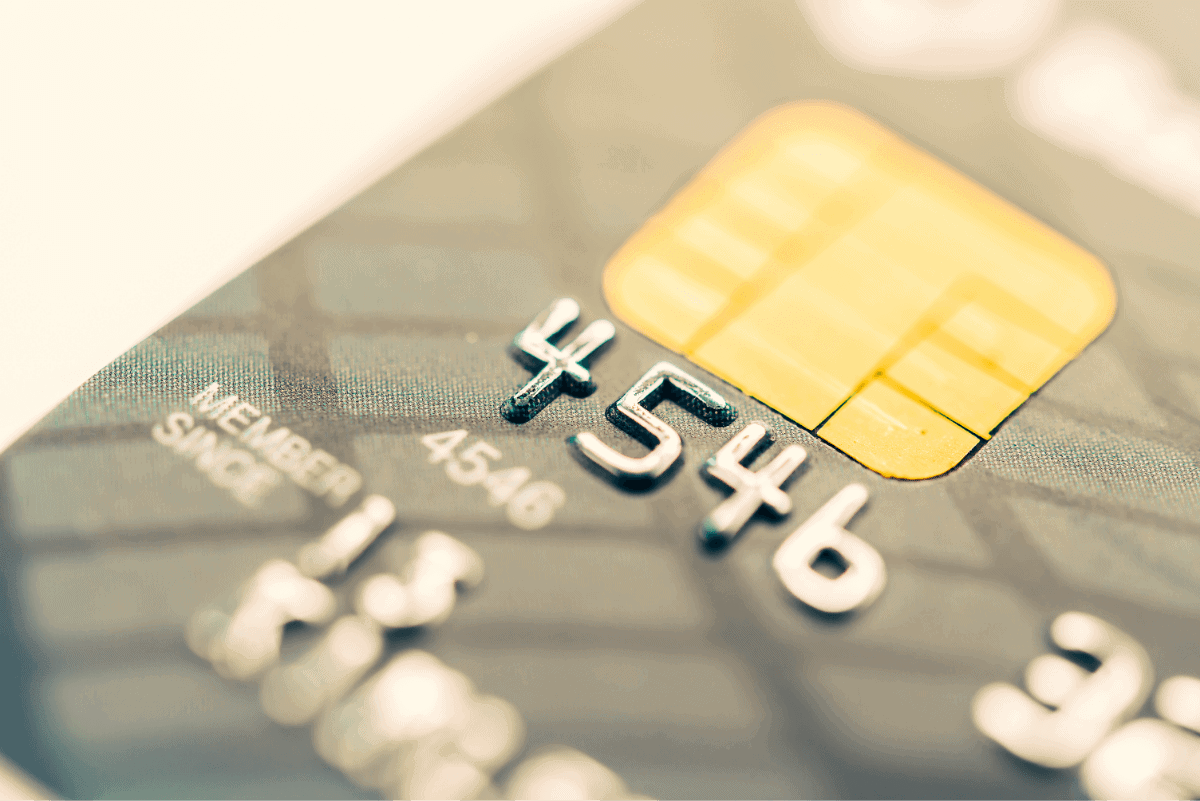Carding 101: What You Need to Know
With the increasing popularity of online shopping, digital payments, and e-commerce, the risk of credit card fraud has also increased. One such threat is carding, which is the process of using stolen credit card information to make unauthorized transactions. Carding poses a significant threat to businesses and their customers. Here, we will provide a definition for carding, explore its connection to malicious bots, and discuss the common anti-fraud tactics that businesses can use to protect themselves and their customers from these attacks.
What is Carding?
Carding is a type of fraud where hackers steal credit card, debit card, or gift card information and use it to make purchases. In a carding attack, various types of credit card information can be stolen, including the cardholder's name, the bank identification number (BIN), the credit card number, the expiration date, the card verification code (CVV or CVC), and sometimes the card's billing address and ZIP code.
The stolen credit card data is obtained through various means, such as physical skimming, phishing attacks, data breaches, malware, social engineering, and purchasing the data on the dark web through carding forums or other marketplaces. Once criminal groups have the credit card details, they may use them to make unauthorized purchases, causing significant financial loss to individuals and businesses alike.
Carding is not a new practice, but it has become more prevalent with the growth of e-commerce. In the past, fraudsters had to physically steal credit cards or obtain them through mail theft. Now, carding can be done from anywhere in the world, and with the anonymity of the internet, it is more difficult to track down the perpetrators.

How Do Carding Attacks Work?
Carding attacks typically involve the use of stolen or fraudulently obtained credit card information to make unauthorized purchases. Here's how different types of carding attacks work:
- Small purchases: In this type of carding attack, the fraudster tests the validity of the stolen credit card information by making small purchases. These purchases are typically for low-value items, such as digital goods or small physical items that are easy to resell. The fraudster may also try to make purchases at businesses with weak or non-existent fraud prevention measures.
- Card-not-present (CNP) transactions: CNP transactions occur when the cardholder is not physically present at the time of the transaction, such as when making purchases online or over the phone. In a CNP carding attack, the fraudster uses stolen credit card information to make purchases at online stores or over the phone, where it's harder for merchants to detect fraudulent transactions.
- Credit card stuffing: This type of carding attack involves the use of automated scripts to test the validity of stolen credit card information on multiple websites simultaneously. The fraudster enters the stolen card information on numerous websites, attempting to make purchases or create accounts. This method is called credit card stuffing, and it's designed to quickly determine which credit cards are valid and can be used for larger purchases later.
In all of these types of carding attacks, the fraudster aims to make as many purchases as possible before the card issuer or the cardholder detects the fraudulent activity. Once the fraud is detected, the stolen credit card information can quickly become useless, and the fraudster may move on to other stolen card data.
Success in carding attacks depends on several factors, such as the quality of the stolen credit card data and the efficiency of fraud detection systems employed by banks and financial institutions.
Stages of a Carding Attack
The stages of a carding attack may vary depending on the specific method used, but generally, the following steps are involved:
- Gathering credit card information: The first stage of a carding attack is to gather credit card information, either by purchasing it from a dark web marketplace or by stealing it through hacking, phishing, or skimming.
- Validating credit card information: Once the fraudster obtains the credit card information, they will test it to ensure that it's valid and can be used for fraudulent purchases.
- Identifying potential targets: Fraudsters often use tools to identify potential targets, such as online stores or businesses with weak or nonexistent fraud prevention measures.
- Making purchases: After identifying potential targets, the fraudster will use the stolen credit card information to make purchases, typically for high-value goods and items that can be easily resold.
- Evading detection: To avoid detection, the fraudster may use techniques such as using anonymous proxy servers, creating fake accounts, and using different shipping addresses.
- Initiate chargebacks: Once the fraudulent purchases have been made, the fraudster may initiate chargebacks to get their money back, leaving the merchant with a financial loss.
- Monetizing stolen credit card information: Finally, the fraudster may sell the stolen credit card information on the dark web or use it to make additional fraudulent purchases.

The Connection Between Carding and Bad Bots
One of the ways that fraudsters carry out carding attacks is through the use of malicious bots. Bad bots are software designed to perform automated tasks on the internet. In the case of carding, they are used to carry out fraudulent transactions.
Malicious bots can be used in various ways to carry out carding attacks, including:
- Testing stolen credit card data: A thief may use bots to test whether stolen credit card data is valid and can be used to make purchases.
- Brute-force attacks: Bots can be used to perform brute-force attacks to crack weak passwords or security codes associated with credit card data.
- Automatic checkout: Bots can be used to automate the checkout process on e-commerce sites, making it easier for fraudsters to make fraudulent purchases.
Because bots can carry out these tasks at a rapid pace, they can quickly test multiple stolen credit card numbers or perform multiple transactions, making it harder for businesses to detect and prevent carding attacks.
Detecting and Preventing Carding Attacks
Here are a few measures that businesses can take to enhance their overall cybersecurity and help to prevent carding attacks:
- Implement multi-factor authentication:
Two-factor authentication (2FA) or multi-factor authentication (MFA) are techniques that require users to provide an additional layer of authentication in addition to their login credentials, making it more challenging for attackers to gain access. By requiring users to provide multiple forms of identification, such as a password and a unique code sent via email or text message, 2FA or MFA adds an extra layer of security that can help prevent carding attacks and other types of fraud. This process also helps ensure that only authorized users have access to sensitive data and resources, reducing the risk of data breaches and other forms of cybercrime. - Use machine learning for behavioral analysis:
Machine learning algorithms can be used to detect and prevent carding attacks. These algorithms can learn from historical data to identify patterns that may indicate a carding attack. For example, if a user's purchase behavior suddenly changes, if a user attempts to make multiple purchases within a short period, or if a user attempts to make a purchase outside of their usual location, it may indicate a carding attack. - Limit the number of unsuccessful login attempts:
To prevent brute-force attacks, businesses can limit the number of unsuccessful login attempts before a user is locked out of their account. This can prevent fraudsters from using bots to guess passwords or security codes associated with credit card data. - Implement CAPTCHA:
CAPTCHA is a security feature that helps distinguish between human users and bots, by requiring users to complete a challenge before proceeding. However, some fraudsters have found ways to bypass traditional CAPTCHAs by using human-powered services or automated tools that can solve CAPTCHA challenges. By using an ideal CAPTCHA, such as Arkose MatchKey Challenges, merchants can prevent bots and automated scripts from making fraudulent purchases, making it harder for fraudsters to successfully execute a carding attack. - Use geolocation tracking:
Geolocation tracking can be used to monitor user activity and detect suspicious transactions based on location. By leveraging GPS technology, merchants can verify the location of a device or user and detect fraudulent transactions. Some payment processors use advanced algorithms that account for additional factors such as transaction history, device type, and time of day. Overall, geolocation tracking is an effective anti-fraud tactic that adds an extra layer of security to the payment process. - Use EMV chip terminals:
EMV chip technology has become an increasingly important tool in the fight against payment fraud. With its unique transaction codes for each purchase, it makes stealing card information much more difficult. Merchants who use EMV-enabled terminals are less vulnerable to certain types of fraud, such as skimming and cloning. While EMV technology is not a silver bullet for carding attacks, it is a crucial step in improving payment security and protecting consumers from fraudulent activity. - Update security protocols and software frequently:
In order to avoid vulnerabilities that fraudsters could exploit, it is crucial for businesses to update their security protocols and software frequently. This includes updating operating systems, web servers, and third-party software used on e-commerce sites. - Educate customers on cybersecurity best practices:
Businesses can also play a role in educating their customers on cybersecurity best practices. This includes encouraging customers to use strong passwords, avoid sharing personal information, and regularly monitor their financial statements for suspicious activity.
In addition to these measures, businesses can also work with payment processors and credit card companies to implement additional security measures. For example, payment processors may require additional verification steps for high-risk transactions, or credit card companies may flag suspicious transactions and notify the merchant.
How Arkose Labs Can Help
Carding is a growing threat to businesses and their customers, and it is often carried out using malicious bots. Arkose Bot Manager combines highly transparent detection with targeted attack response to catch fraud early in the customer journey, including carding attacks and payment fraud, without impacting good users. In fact, we’re the only platform to guarantee protection from bots. Businesses that work with Arkose Labs benefit from a $1 million credential stuffing warranty and a guaranteed outcome. Find out more by booking a demo today!







